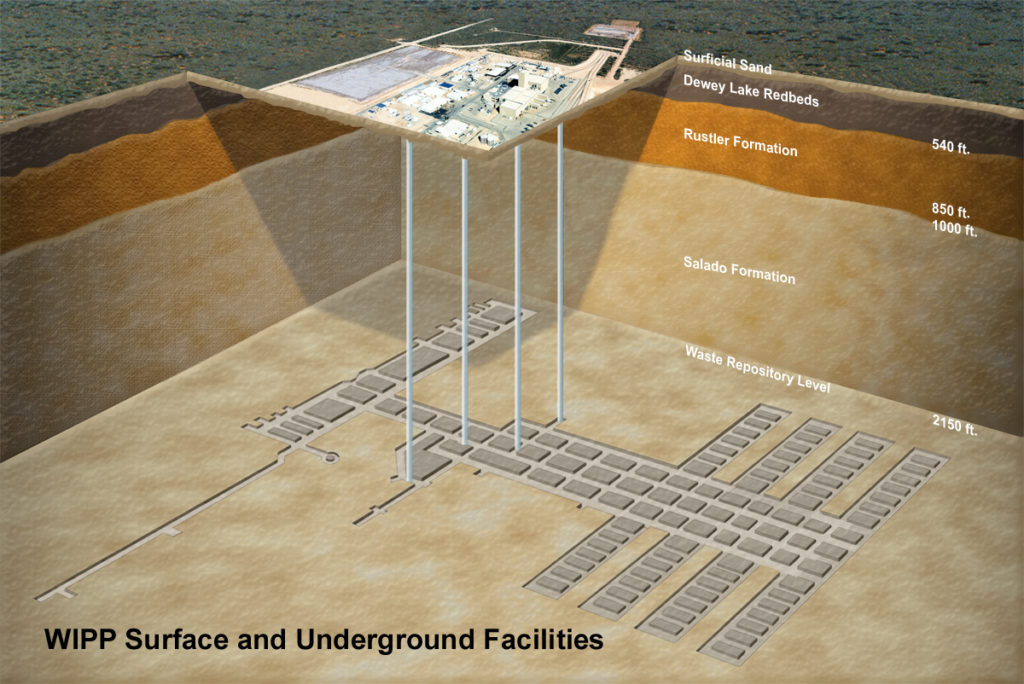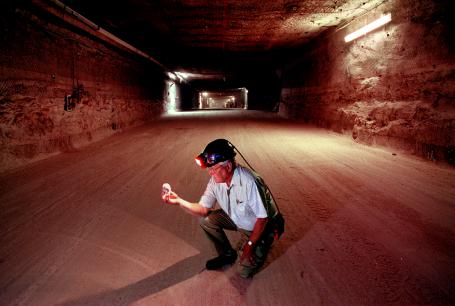Today, the National Nuclear Security Administration (NNSA) released its long-awaited study of alternative options for disposition of excess weapons plutonium. The report confirms what I anticipated in a paper I presented in July 2013: the option of down-blending the plutonium with inert materials and emplacing it in the Waste Isolation Pilot Plant (WIPP) is feasible, has the least technical risk, and is (by far) the least expensive alternative. And despite the recent accident at WIPP that caused a release of radioactive contamination, UCS still believes that this option is the best of many bad alternatives and deserves full consideration, provided that the WIPP contractor implements badly needed corrective actions.
The Energy Department’s program for disposing of excess plutonium—that is, plutonium that the U.S. government says it no longer “needs” for its nuclear weapons programs—has major political, technical and economic problems. The approach that DOE has been throwing money at for years, converting the plutonium into mixed-oxide (MOX) fuel for nuclear reactors, has ballooned in cost so much (to over $30 billion) that DOE now says it is “unaffordable.”
However, DOE is in a bind because it abandoned development work on potentially cheaper alternatives back in 2002 and put all its plutonium eggs in the MOX basket. And there is a strong constituency for the status quo: the political establishment in South Carolina and Georgia. These fair-weather conservatives have no problem with government assistance—as long as it is in the form of nuclear welfare for their states.
The WIPP Option
The NNSA options study examines the option of disposing of the plutonium in WIPP, the geologic repository for transuranic waste in the salt beds near Carlsbad, New Mexico, and estimates it would cost around one-third of the MOX option (not counting the $5 billion that has already been wasted on the MOX program). But even this approach has its problems, the primary one being that the WIPP facility has been shut down since February 14, when an as-yet-unexplained incident deep in the repository level led to the release of low levels of plutonium and americium into the environment.
Until DOE uncovers the root cause of this event, it is premature to make any predictions about the future of WIPP, much less the viability of new missions. However, if the problem that led to the release turns out to be correctable and if DOE executes all the reforms needed to reasonably prevent such events from recurring, DOE should seriously consider the WIPP option for disposing of the entire stockpile of 34 metric tons of plutonium that is covered by the 2000 US-Russia Plutonium Management and Disposition Agreement.
To provide perspective, one should keep in mind that the maximum radiological consequences of an accident at an underground repository like WIPP would be far smaller than those that could result from an accident at a large-scale plutonium processing facility like the MOX fuel fabrication plant, or from a Fukushima-like core melt accident at a reactor loaded with MOX fuel. In DOE’s recent investigative report on the WIPP release, it disclosed numerous flaws in the performance of the WIPP site contractor. But there’s no guarantee that the MOX site contractor, Shaw AREVA MOX Services, would be capable of running the MOX plant any more safely than the WIPP contractor ran its facility.
WIPP’s primary purpose is geologic disposal of radioactive waste generated at Energy Department facilities that has been contaminated with relatively low levels of certain radioactive elements, such as plutonium or americium. But DOE has also buried more concentrated plutonium wastes in WIPP, by blending them down to less than 10 percent plutonium with a mysterious substance called “termination of safeguards material” or, more colloquially, “stardust.”
About three metric tons of plutonium was disposed of in WIPP in this manner. But DOE did not evaluate the possibility of disposing of the entire plutonium surplus in WIPP because it claimed that WIPP did not have enough remaining capacity to accept so much additional material. The total volume of transuranic waste that can be disposed of in WIPP is limited.
However, in the attached paper, which I presented at the Institute of Nuclear Materials Management conference in July 2013, I showed that it would be possible to use WIPP to dispose of not only the 34 metric tons of plutonium covered by the U.S.-Russian agreement, but also a significant fraction of the approximately 20 additional tons of plutonium that the U.S. has declared excess. This is because a new disposal package has been designed that would allow more plutonium to be packed into each waste drum. The NNSA options study released today confirms this analysis.


